Search titles
Displaying results 1 to 10 of 112.
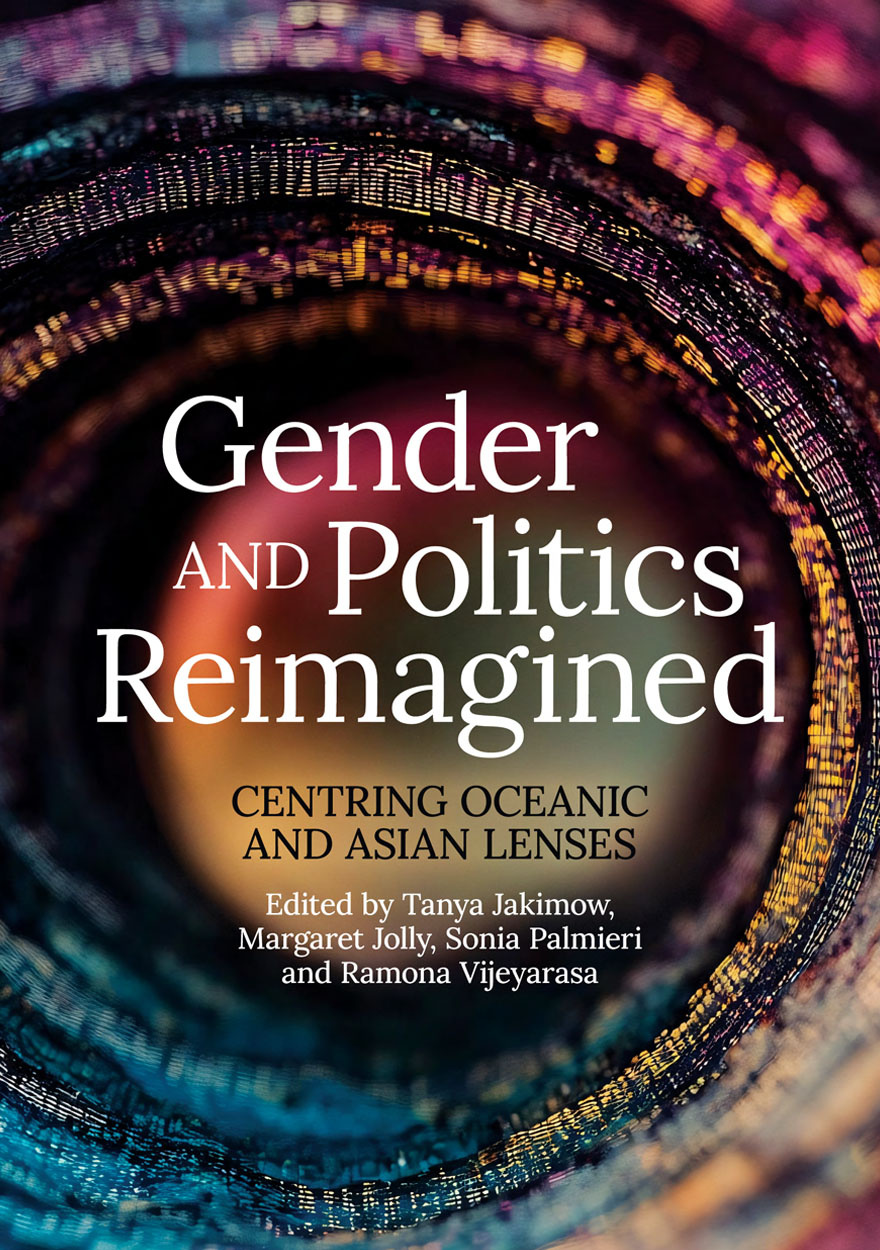
Gender and Politics Reimagined »
Centring Oceanic and Asian Lenses
Publication date: December 2025
This timely collection reflects a coming together of academics, gender and development practitioners and activists to reflect on the gendering of politics. By centring Asia and Oceania and traversing numerous disciplines, the volume disrupts the illusion of certainty and clarity as to what is known about gender and politics. Individual chapters present specific research projects, while providing epistemological, theoretical and methodological reflections on how knowledge is produced and by whom, challenging the existing canon. The contributions collectively demonstrate the possibilities for theorising from Asia and Oceania to address the lack of diversity in political representation and leadership on a global scale, in which gender, race, class, caste, (dis)ability and sexual identity are powerfully interconnected.
Arising out of the Gender and Cultural Diversity in Politics: Australia, Asia and the Pacific workshop held at The Australian National University in 2022, this collection underscores the importance of fostering scholarship and mentorship in the academy. The diversity of authorship encompasses differences in ethnicity, nationality, sexuality and career stage, with an emphasis on the inclusion of authors from various Oceanic and Asian countries. The volume promotes academic practice as integral to social change, and social action as a form of knowledge production. As such, Gender and Politics Reimagined is sure to be a cornerstone in future scholarly and activist discussions.
Format: Hardback
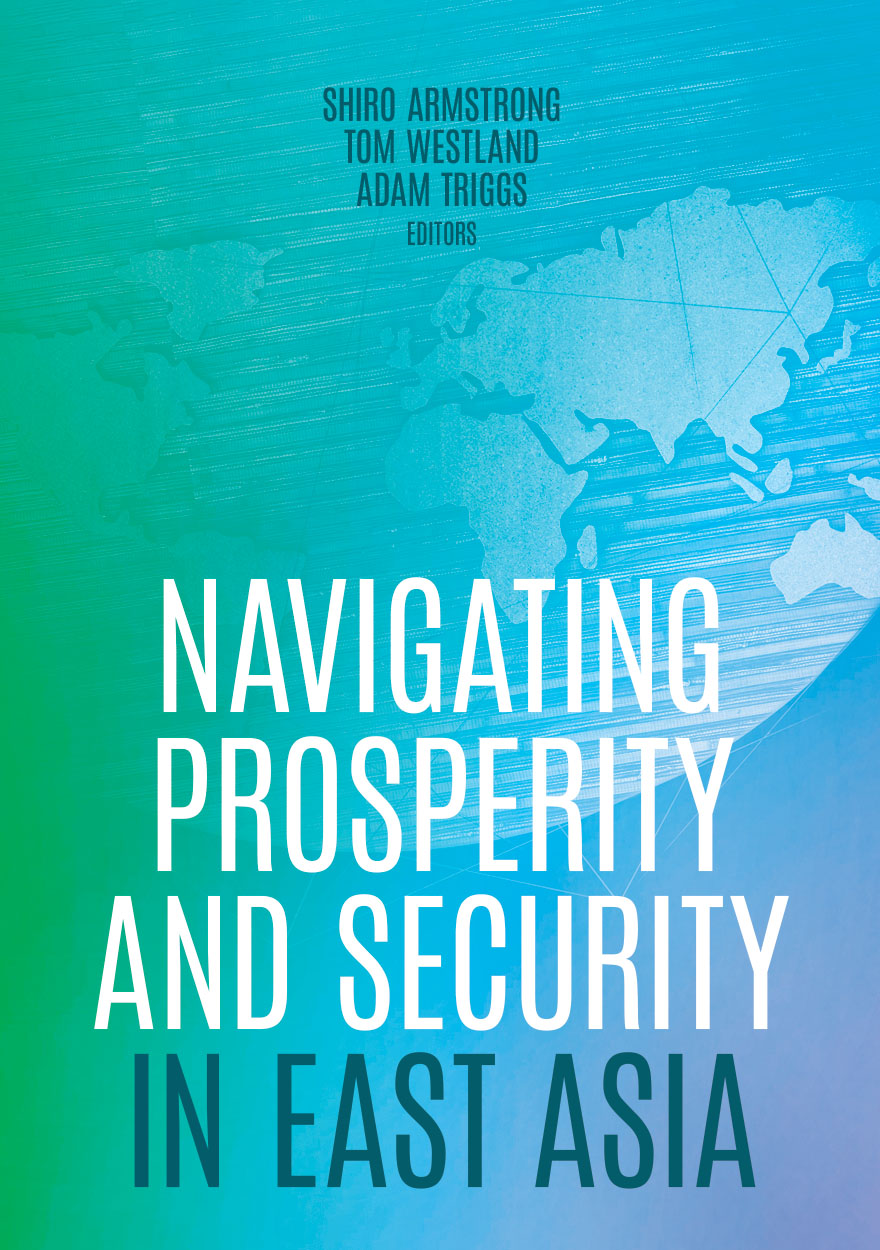
Navigating Prosperity and Security in East Asia »
Publication date: May 2023
The world’s two largest economies, the United States and China, are locked in a trade war, complicating policy choices internationally. These choices are sharper for the countries of East and Southeast Asia than they are elsewhere, because the multilateral rules-based economic order on which East Asian economic integration and cooperation is built is under threat.
Economic policy has never been separate from security considerations. For decades, the national security risks inherent in economic exchange have been mitigated under a US-led system that allowed the strengthening of economic ties, including between China and the rest of the world. But economics and security are increasingly entangled in a way that is damaging to both, creating a dangerous trade-off. Now, as global uncertainties grow, the risks of international exchange—rather than its benefits—are beginning to dominate the calculus for some policymakers.
Against this backdrop, how can Southeast Asian countries and US allies in Asia balance their security interests and their economic interests? And how can these countries, individually and collectively, broaden their policy options and deepen economic integration? This volume investigates the domestic and international dimensions of these questions.
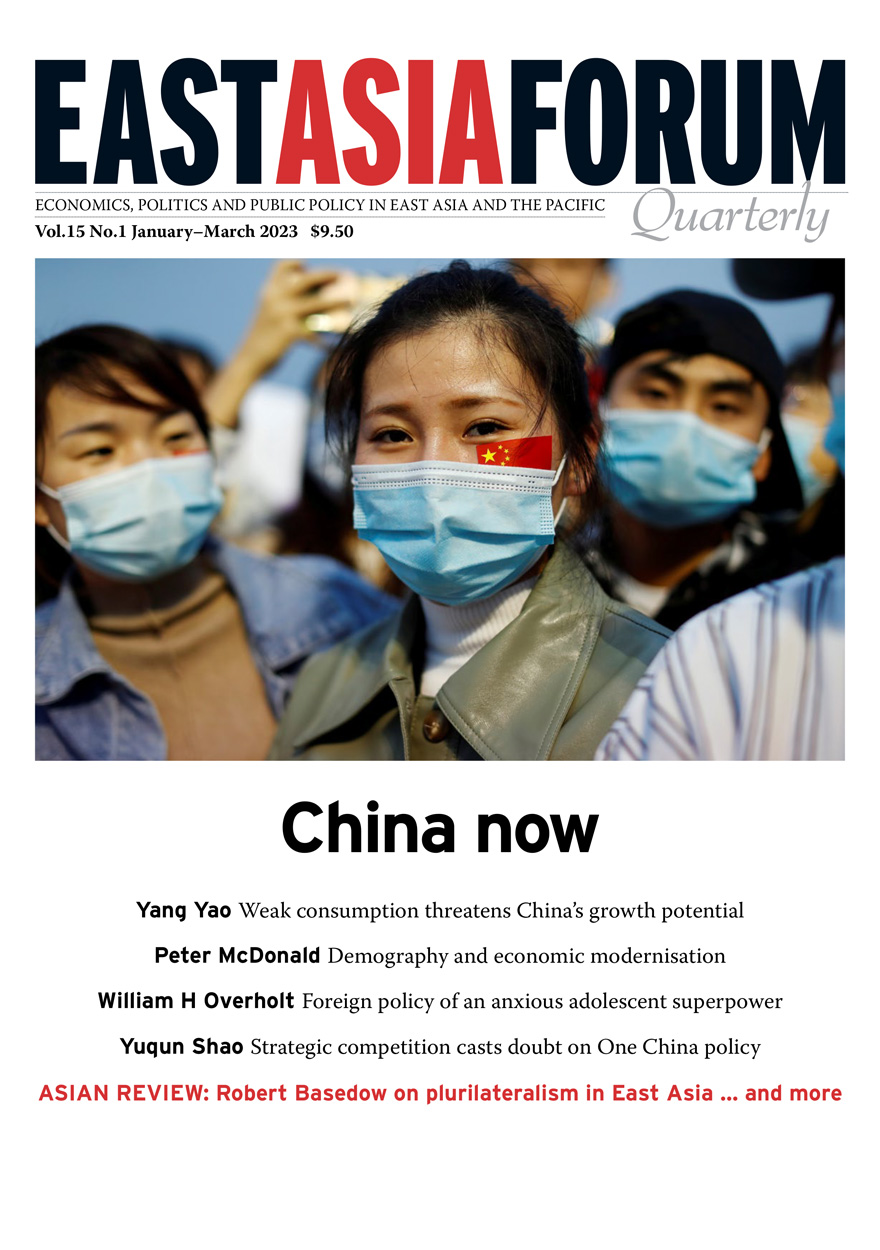
East Asia Forum Quarterly: Volume 15, Number 1, 2023 »
Publication date: March 2023
While many rejoice in something like ‘normality’ after the years of disruption caused by the global COVID-19 pandemic, the world will not resume its former shape. Nowhere is this more evident than in China. After the disastrous economic performance of 2022, a recalibration of China’s policies was essential—including by retreating from zero-COVID and, under the banner of ‘Chinese-style modernisation’, relaxing restrictions on the free market. China’s greatest post-pandemic challenge, however, will be the terms of its engagement with the outside world. Its claims to both developing-nation status and global leadership define China, some say, as an ‘anxious adolescent superpower’. This issue of East Asia Forum Quarterly canvasses a range of shifts in Chinese society and daily life as well as policy direction: describing women’s leading role in the calls for social change, explaining how China’s demographic crunch is unlikely to affect its economic modernisation over the coming two decades, examining the difficulties faced by rural migrants and in investing in the education of the rural young, and detailing the public response to the poorly understood social credit system.
Download for free
Not available for purchase
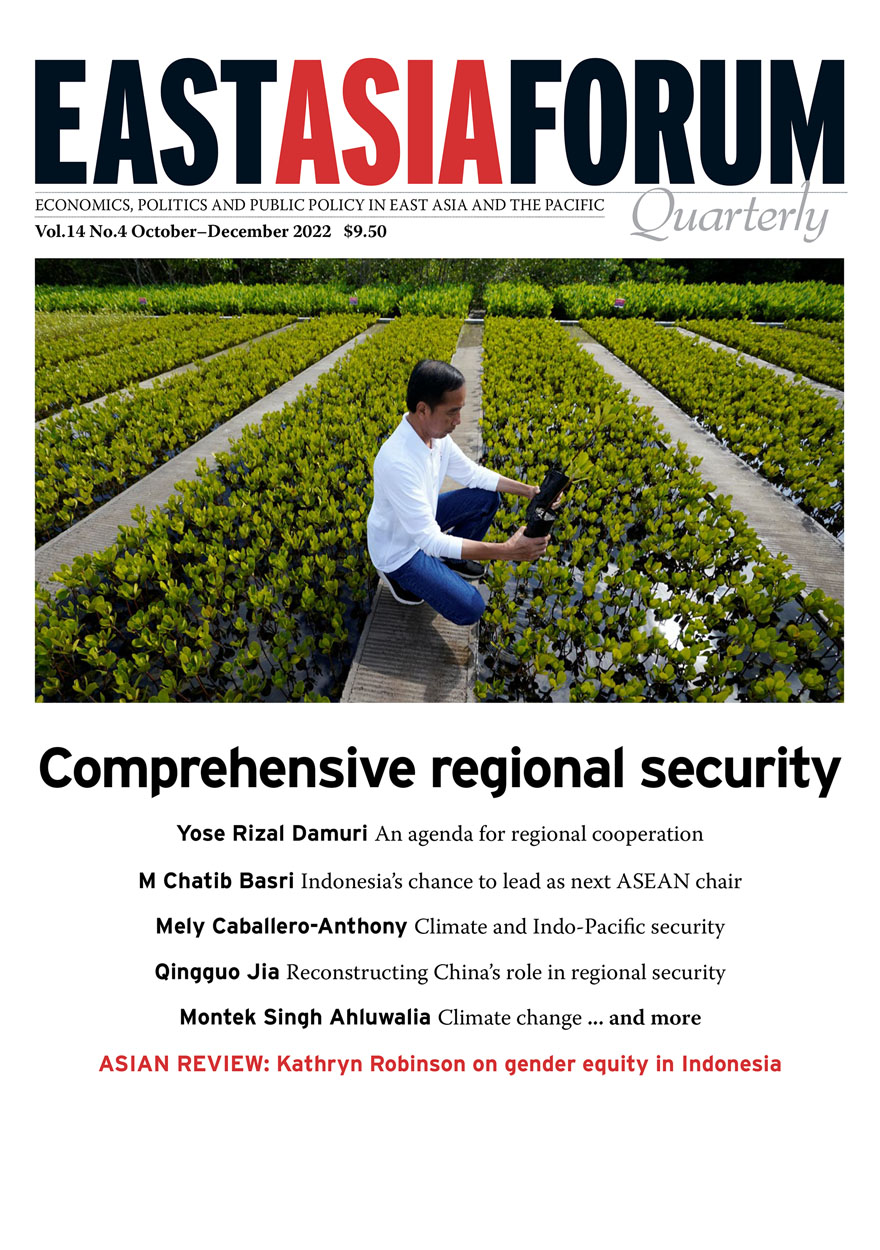
East Asia Forum Quarterly: Volume 14, Number 4, 2022 »
Publication date: December 2022
Southeast Asian nations have long understood that effective national security goes well beyond military preparedness, encompassing a variety of ‘non-traditional’ security issues. This idea is at the heart of political cooperation within ASEAN and competes with traditional notions of regional security in East Asia. But the vocabulary that has developed in the face of growing geopolitical tensions—decoupling, dual circulation, friendshoring, ‘strategic’ supply chains, securitisation—suggests that the big powers are working towards their own notion of comprehensive security.
Contributors to this issue of East Asia Forum Quarterly recognise that comprehensive regional security—an approach that embraces economic, environmental and energy security as well as military interests and considers how they are secured within today’s economically interdependent and politically cooperative regional system—can only be secured collectively: one country’s resilience to climate change, or its access to free and well-served markets for energy and food, cannot come at the expense of others.
Download for free
Not available for purchase
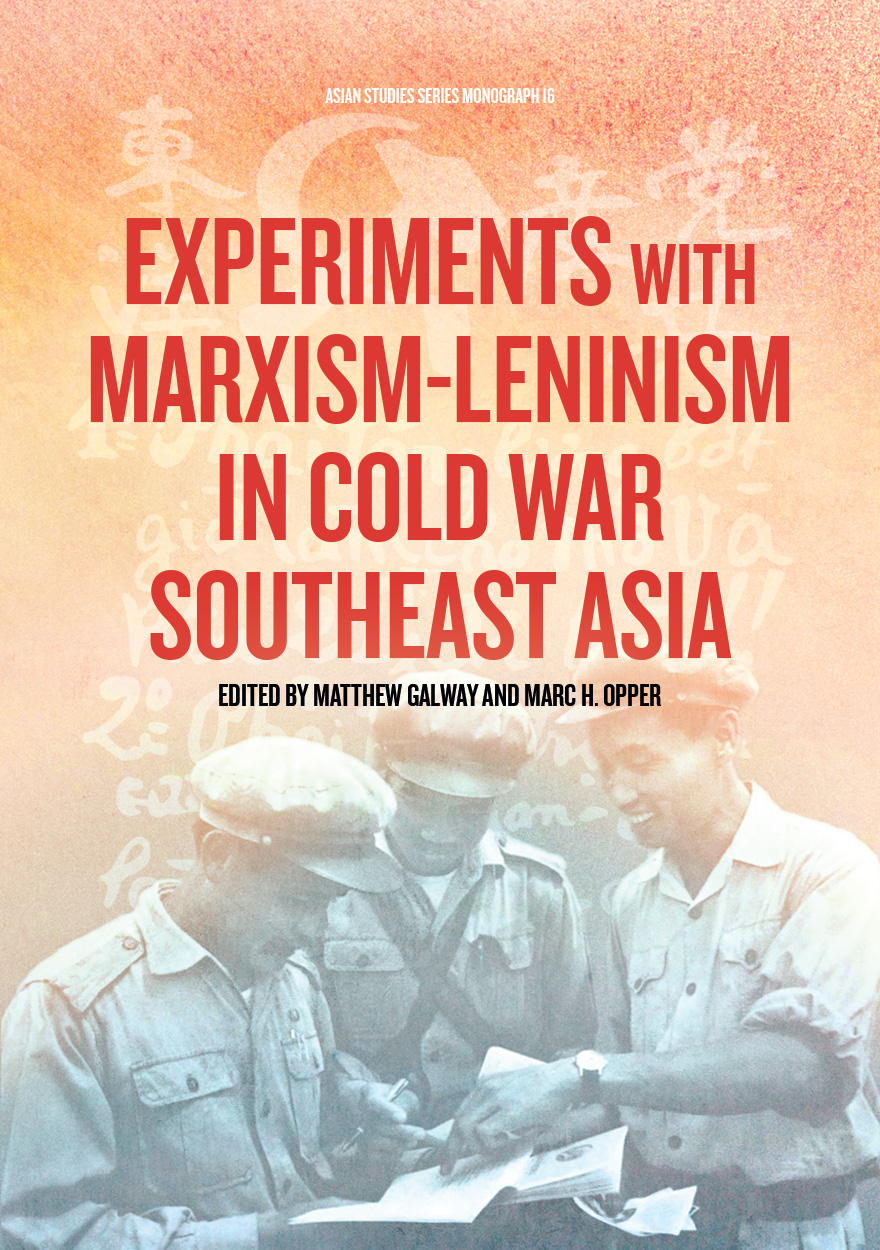
Experiments with Marxism-Leninism in Cold War Southeast Asia »
Edited by: Matthew Galway, Marc H. Opper
Publication date: September 2022
One of the most contentious theatres of the global conflict between capitalism and communism was Southeast Asia. From the 1920s until the end of the Cold War, the region was racked by international and internal wars that claimed the lives of millions and fundamentally altered societies in the region for generations. Most of the 11 countries that compose Southeast Asia were host to the development of sizable communist parties that actively (and sometimes violently) contested for political power. These parties were the object of fierce repression by European colonial powers, post-independence governments and the United States. Southeast Asia communist parties were also the object of a great deal of analysis both during and after these conflicts.
This book brings together a host of expert scholars, many of whom are either Southeast Asia–based or from the countries under analysis, to present the most expansive and comprehensive study to date on ideological and practical experiments with Marxism-Leninism in Southeast Asia. The bulk of this edited volume presents the contents of these revolutionary ideologies on their own terms and their transformations in praxis by using primary source materials that are free of the preconceptions and distortions of counterinsurgent narratives. A unifying strength of this work is its focus on using primary sources in the original languages of the insurgents themselves.
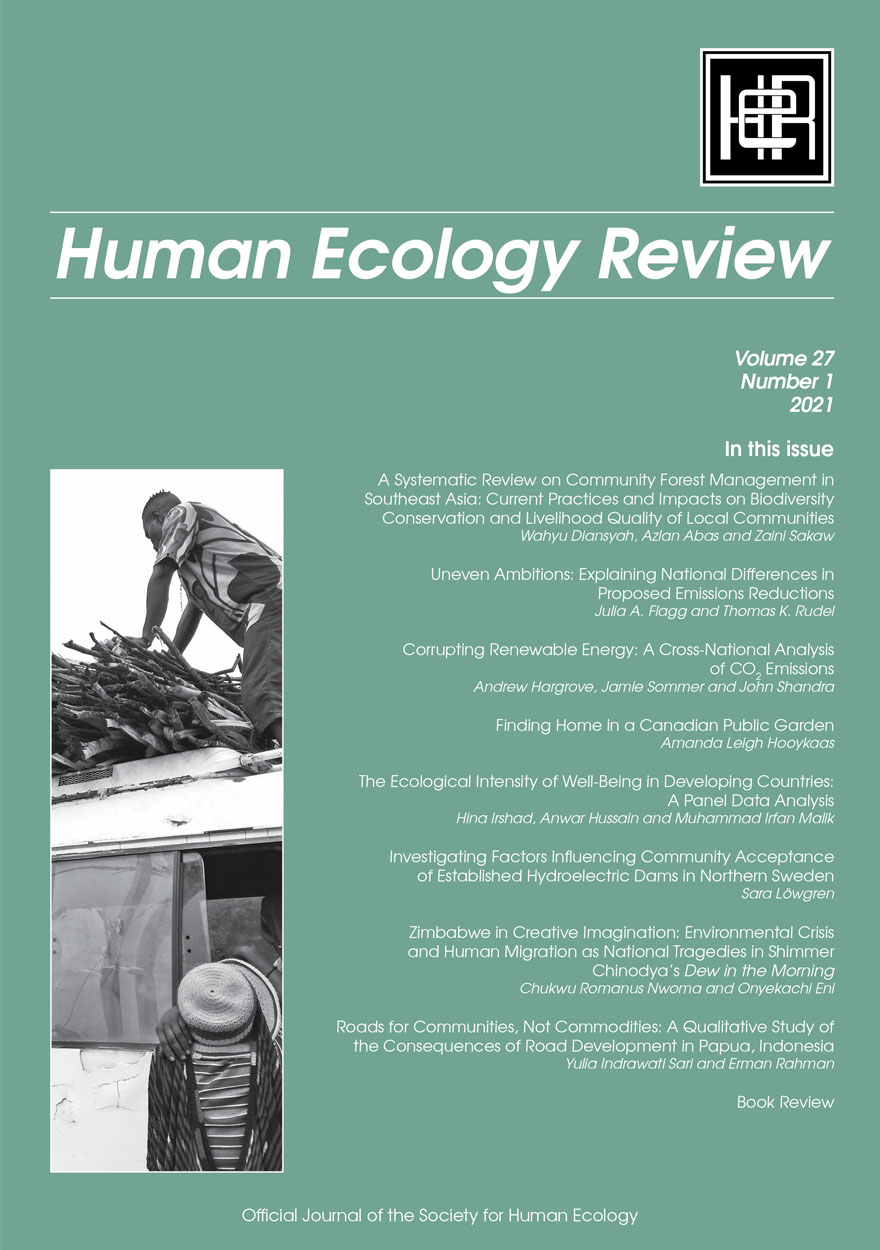
Human Ecology Review: Volume 27, Number 1 »
Publication date: December 2021
This volume of Human Ecology Review represents an internationally diverse range of human ecology research and practice. Diansyah, Abas, and Sakawi present a review of community forest management in Southeast Asia and its impacts on biodiversity conservation community livelihoods. Flagg and Rudel survey national differences in proposed greenhouse gas emission reductions and relative levels of fossil fuel dependencies. On a similar topic, Hargrove, Sommer, and Shandra link national levels of CO2 emissions to levels of executive and public sector corruption, with consequences for transitioning to renewable energy economies. Hooykaas provides a Canadian place-based case study of the role of public gardens in developing a sense of being ‘at home’. Irshad, Hussain, and Malik analyse the ecological intensity of different levels of well-being across a number of developing countries. From Sweden, Löwgren explores a range of factors that encourage or reduce community acceptance of hydroelectric power generation. Nwoma and Eni provide a fascinating discussion on the interconnectedness between literature and Zimbabwe’s environmental crisis. Finally, Sari and Rahaman give us a study of the community impact of road development in Papua, Indonesia.
Download for free
Not available for purchase

Fighting Australia’s Cold War »
The Nexus of Strategy and Operations in a Multipolar Asia, 1945–1965
Edited by: Peter Dean, Tristan Moss
Publication date: 2021
In the first two decades of the Cold War, Australia fought in three conflicts and prepared to fight in a possible wider conflagration in Southeast Asia and the Pacific. In Korea, Malaya and Borneo, Australian forces encountered new types of warfare, integrated new equipment and ideas, and were part of the longest continual overseas deployments in Australia’s history. Working closely with its allies, Australia also trained for a large conventional war in Southeast Asia, while a significant percentage of the defence force guarded the Papua New Guinea–Indonesian border. At home, the Defence organisation grappled with new threats and military expansion, while the Australian Security Intelligence Organisation defended the nation from domestic and foreign threats. This book examines this crucial part of Australia’s security history, so often overlooked as merely a precursor to the Vietnam War. It addresses key questions such as how did Australia achieve its security goals at home and in the region in this new Cold War environment? What were the experiences of the services, units and individuals serving in Southeast Asia? How did this period shape Australia’s defence for years to come?
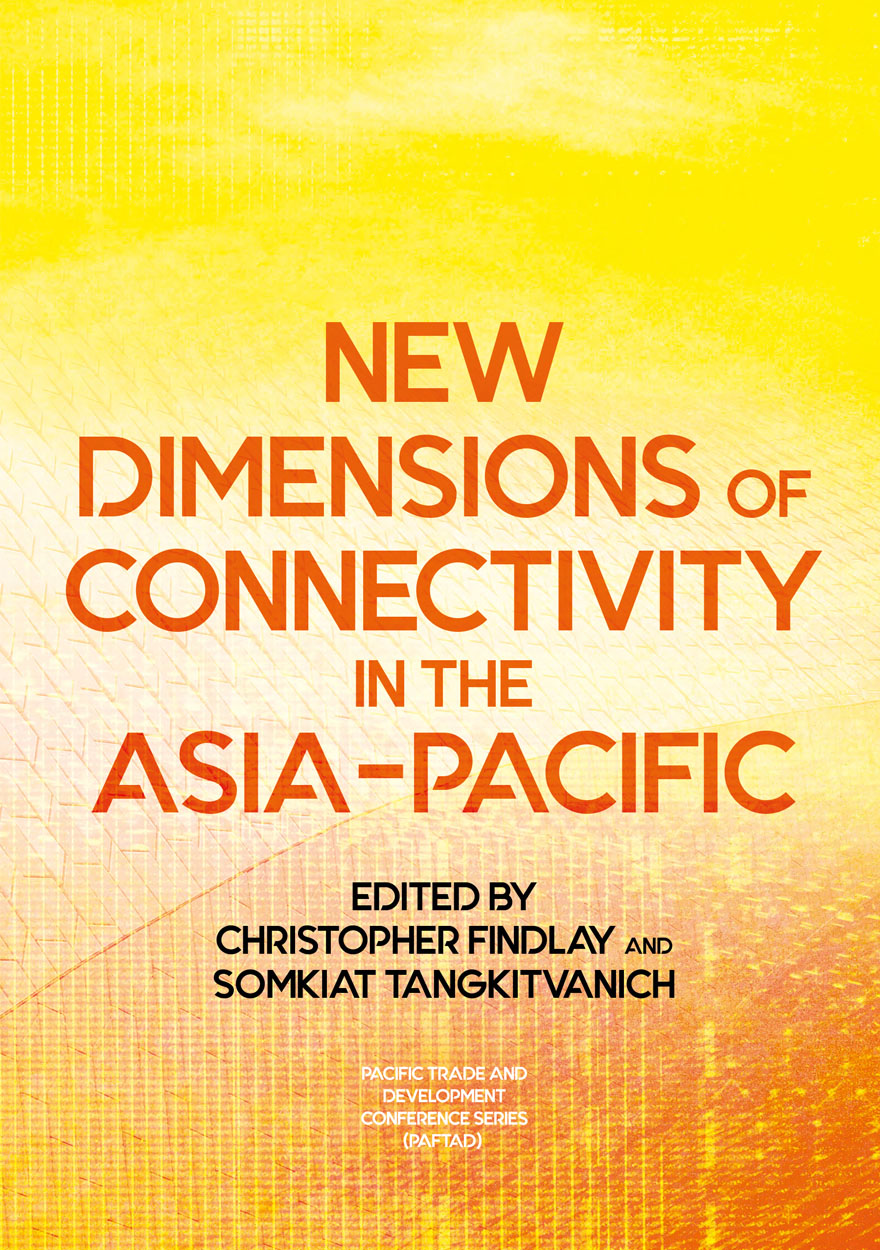
New Dimensions of Connectivity in the Asia-Pacific »
Edited by: Christopher Findlay, Somkiat Tangkitvanich
Publication date: November 2021
There is no bigger policy agenda in the East Asian region than connectivity. Costs of international connectivity are indeed falling, in the movement of goods, services, people and data, leading to greater flows, and to the reorganisation of business and the emergence of new forms of international transactions. There are second-round effects on productivity and growth, and on equity and inclusiveness. Participating in trade across borders involves significant set-up costs and, if these costs are lowered due to falling full costs of connectivity, more firms will participate, which is a driver of productivity growth and innovation at the firm level. Connectivity investments are linked to poverty reduction, since they reduce the costs of participating in markets.
This volume includes chapters on the consequences of changes in both physical and digital connectivity for trade, for the location of economic activity, for forms of doing business, the growth of e-commerce in particular, and for the delivery of new services, especially in the financial sector. A study of China’s Belt and Road Initiative (BRI) is also included. These studies are preceded by an assessment of the connectivity performance in the Asia-Pacific region and followed by a discussion of impediments to investment in projects that contribute to productivity. The collection as a whole provides the basis for a series of recommendations for regional cooperation.
The Pacific Trade and Development (PAFTAD) conference series has been at the forefront of analysing challenges facing the economies of East Asia and the Pacific since its first meeting in Tokyo in January 1968.
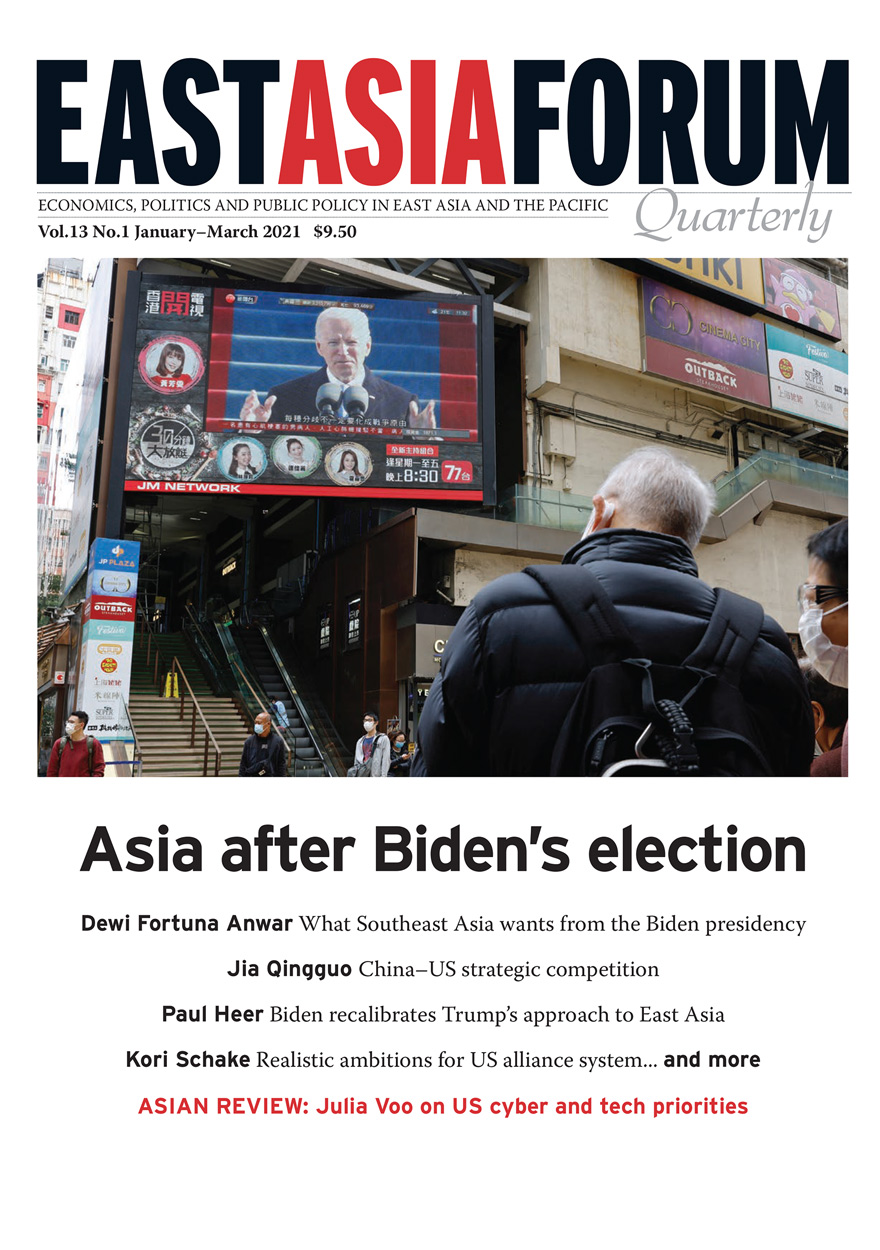
East Asia Forum Quarterly: Volume 13, Number 1, 2021 »
Publication date: March 2021
Few American administrations in living memory face as arduous a set of domestic and external policy challenges as that led by President Joseph R. Biden. What faces the new team in Washington is nothing short of herculean: arrest the scourge of COVID-19, grow the economy and begin once more to address the historic grievances of racial injustice and socioeconomic inequality. How it handles those tasks will profoundly affect its capacity to prosecute an effective foreign policy.
This issue of the Quarterly explores the monumental foreign policy challenges in Asia that await the Biden administration. Our contributors ponder the fate of the US–China trade war, the limits to achieving an ambitious national climate policy, the ongoing challenges on the Korean peninsula, in South and Southeast Asia, and the likely financial constraints on a more forward-leaning US military posture.
Download for free
Not available for purchase

Achieving Inclusive Growth in the Asia Pacific »
Edited by: Adam Triggs, Shujiro Urata
Publication date: August 2020
The world’s developed economies are experiencing a sharp backlash against globalisation, and it appears to be contagious. Will Asia catch it next? Asia has seen spectacular growth in recent decades. It has benefited substantially from global trade, finance, openness and the rules-based international order. But much of the growth Asia has enjoyed has not been shared. It has not been inclusive growth. Inequality in Asia is among the highest in the world. The richest man in Vietnam now earns more in a single day than the poorest person does in a decade. Asia has far to go in making its societies more inclusive to women, ethnic minorities and the LGBT community. How can Asia reduce inequality? What are the forces that determine whether growth in the Asia Pacific is inclusive or not? And what can be done to make Asia’s growth more inclusive in the future? This book brings together the region’s leading thinkers to explore how to change Asia’s trajectory, before it is too late.
The Pacific Trade and Development (PAFTAD) conference series has been at the forefront of analysing challenges facing the economies of East Asia and the Pacific since its first meeting in Tokyo in January 1968.



